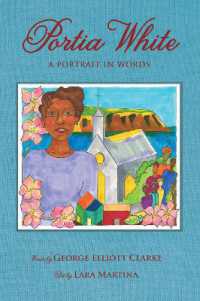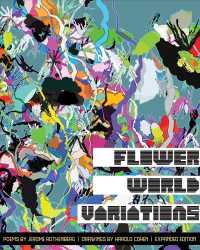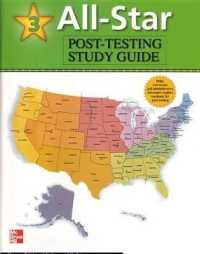- ホーム
- > 洋書
- > ドイツ書
- > Humanities, Arts & Music
- > Music
- > musical equipment
Description
(Short description)
This piece follows the standard AABA form and should be played half-note equals 104-116. Be careful not to play it too fast as the horns will have difficulty with the melody and interlude. The melody itself is quite quirky and intervallic and offers fruit for improvisation.Besetzung:3 Melodie-Instrumente, Rhythmusgruppe
(Text)
Dieses Stück folgt der Standardform AABA und sollte im Tempo 104-116 BPM (halbe Note) gespielt werden. Achten Sie darauf, es nicht zu schnell zu spielen, da die Hörner sonst Probleme mit der Melodie und dem Zwischenspiel bekommen. Die Melodie selbst ist recht eigentümlich, schreitet in Intervallen fort und bietet Möglichkeiten zum Improvisieren. Das doppelchörige Solo/Ensemble-Zwischenspiel bei Buchstabe D1 sollte nach allen Solos gespielt werden, mit Ausnahme der Drums, die ein Solo über die Liedform bei Buchstabe G spielen. Beachten Sie, dass der zweite Zwischenspielchor optional ist bzw. anstelle von Chor Eins gespielt werden kann, je nach Wunsch des Ensembles. Das Zwischenspiel bei den Buchstaben D1 und D2 wurde geschrieben, um Solisten das Improvisieren über die Form des Stückes zu erleichtern.Simba Samba ist meiner Tochter Bianca Antonia Rossi gewidmet. Der Titel rührt von ihren ersten gesprochenen Worten her, als sie versuchte, das Alphabet aufzusagen. Der Name, den sie damals ihrem Lieblingsstofftier gab (eigentlich bekannt als Tigger aus "Winnie the Pooh"), war Simba.Schwierigkeitsgrad: 4
(Short description)
This piece follows the standard AABA form and should be played half-note equals 104-116. Be careful not to play it too fast as the horns will have difficulty with the melody and interlude. The melody itself is quite quirky and intervallic and offers fruit for improvisation.Besetzung:3 melody instruments, rhythm section
(Text)
This piece follows the standard AABA form and should be played half-note equals 104-116. Be careful not to play it too fast as the horns will have difficulty with the melody and interlude.The melody itself is quite quirky and intervallic and offers fruit for improvisation. The Two-Chorus Solo/Ensemble Interlude at Letter D1 should be played following all solos except drums which solos over the song form at Letter G.Note -The second interlude chorus is optional or can be played in place of chorus one, depending on the wishes of the ensemble. The interlude at Letters D1 and D2 was written to assist soloists with improvising over the form of the piece. Simba Samba is dedicated to my daughter Bianca Antonia Rossi. The title comes from some of her first spoken words while trying to pronounce her ABCs. Her favourite stuffed animal at that time (known as Tigger from Winnie the Pooh) became known in our household as her Simba.Instrumentation:3 melody instruments, rhythm section








